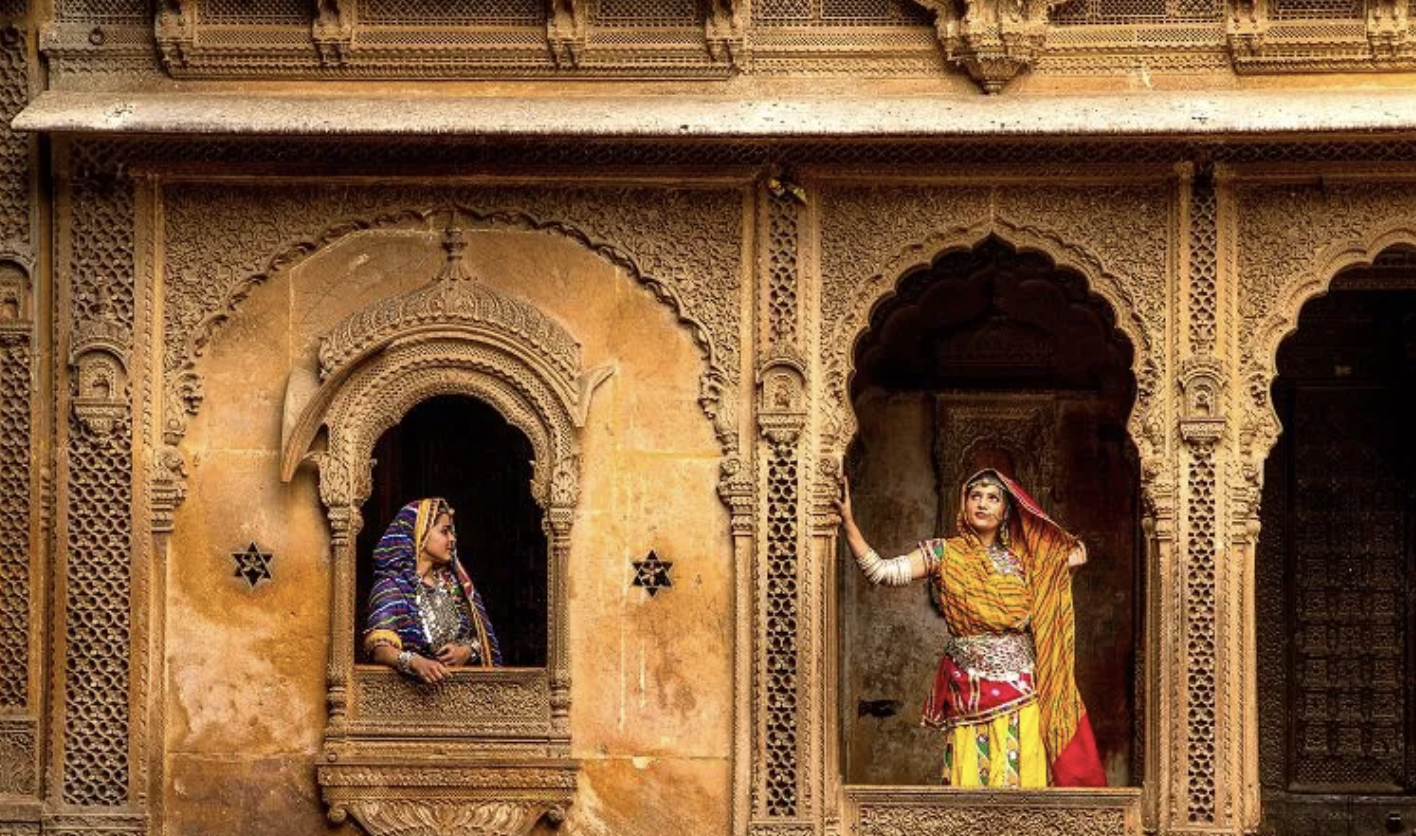
From behind the jalis (screens) and chanjigas (overhangs), within the confines of a shaded sehn (courtyard), resides the traditional haveli woman. Enclosed within the sprawling courtyard walls, the question arises; is she oppressed or empowered? Within present-day Indian/ Pakistani history, the earliest known settlements date back to 2300 BC. However, prior to the British invasion and colonization of 1858, cities were primarily characterized by Indo-Islamic Mughal architecture typologies; along with some Hindu, Sikh, and Buddhist designs. Branching off these traditional influences and inspired by cross-cultural currents from Central Asia, Persia, and the Rajput, evolved the Haveli. The word Haveli (mansion) is an edifice that rose in popularity in the 18th-19th century within pre-Partition western India— predominantly in Punjab, Rajasthan, and Gujarat. The exact internal organizational structure of a haveli can vary, but typically it is divided into distinct male and female domains. The male domain, or the mardaan khana, is the area of the haveli where men live and conduct business. This area is usually located at the front of the haveli and is open to visitors. Whilst, the female domain, or zenaan khana, is the area of the haveli where women live and spend most of their time cooking, cleaning, socializing, and raising children. This area is typically located at the back of the haveli and is off-limits to male visitors. Design features such as chiks (bamboo blinds), pardahs (curtains) and jalis (pierced screens) not only provide shade and passive ventilation but afforded additional privacy. Often women observed happenings within the public spaces from behind the veil of the jaalis. Initially, the haveli was developed in response to subcontinental climatic conditions, culture, religion, and arts. However, today, perhaps the most prominent function of the haveli is its role in maintaining a certain level of privacy, through physical and theoretical forms of the veil. In this article the veil will directly correspond to the haveli, operating as an architectural veil, fostering a means of sexual segregation and seclusion based on spatial boundaries. The phenomenon of veiling has existed in innumerable cultures and religions yet, as we are all familiar with, few institutions dispute ideas of female freedom and equality as deeply as that of pardah— the female veil. Within the Western world, the veil is typically categorized as an Islamic phenomenon, however when considering the veil that the haveli provides, it has been found to be a cultural feature of upper-class Hindu, Muslim, and Sikh families within India and Pakistan. Using the trope of the Haveli as a veil allows us to break down the first and third-world feminist conceptions of how far women's space and agency overlap within the gendered spaces of the Haveli. But what is first and third-world feminism?